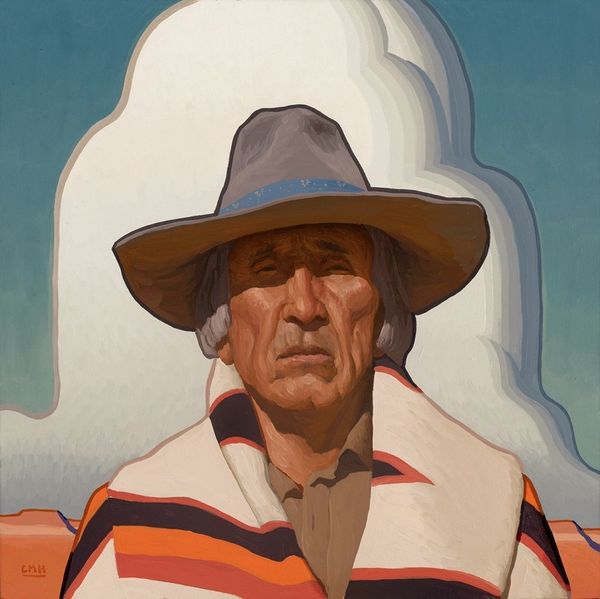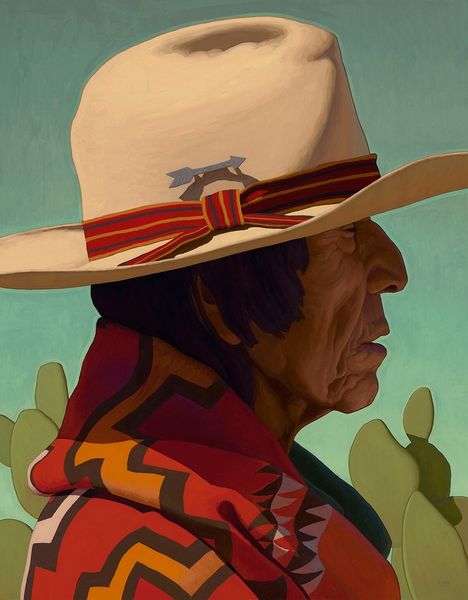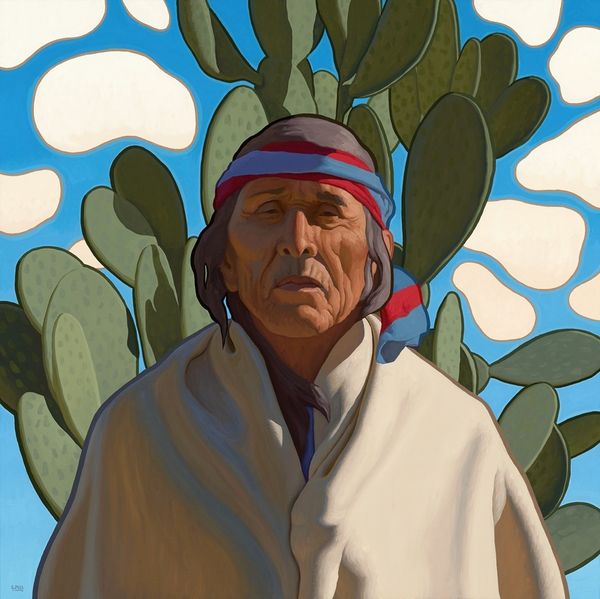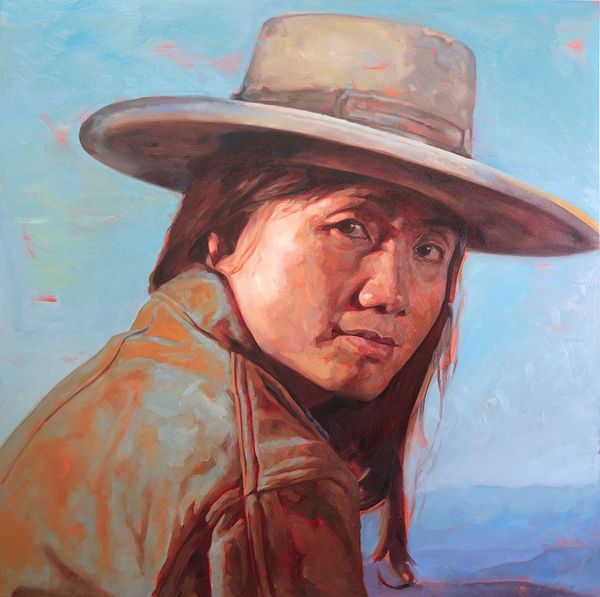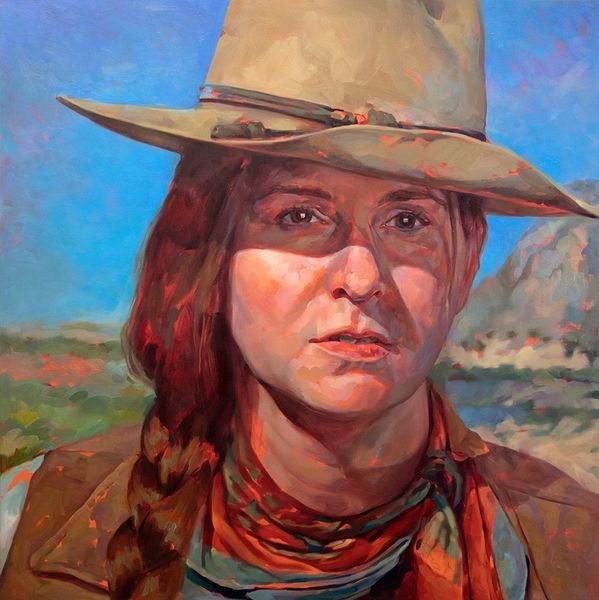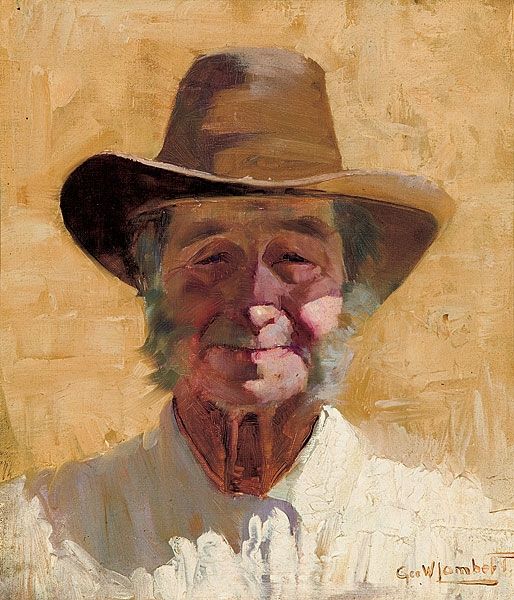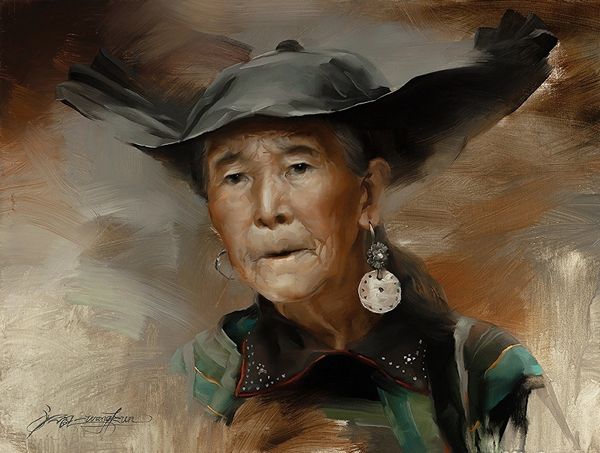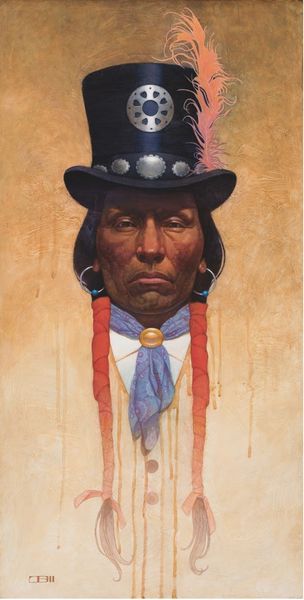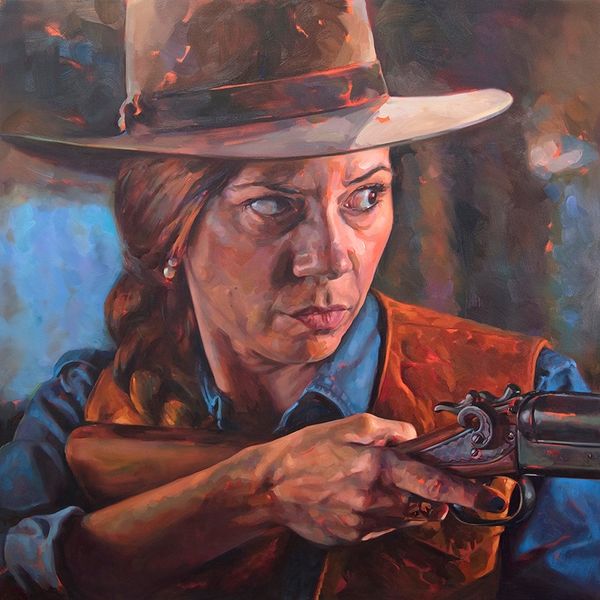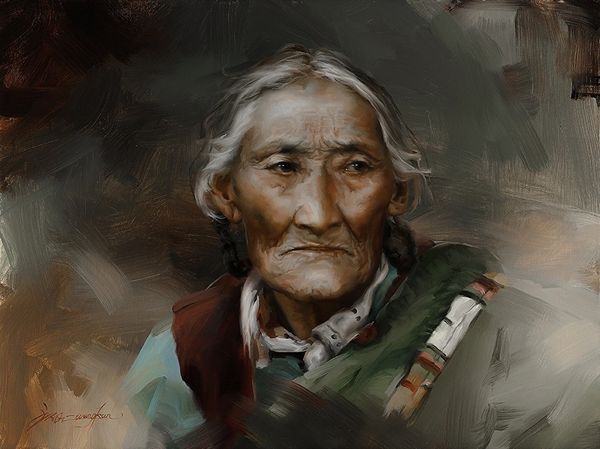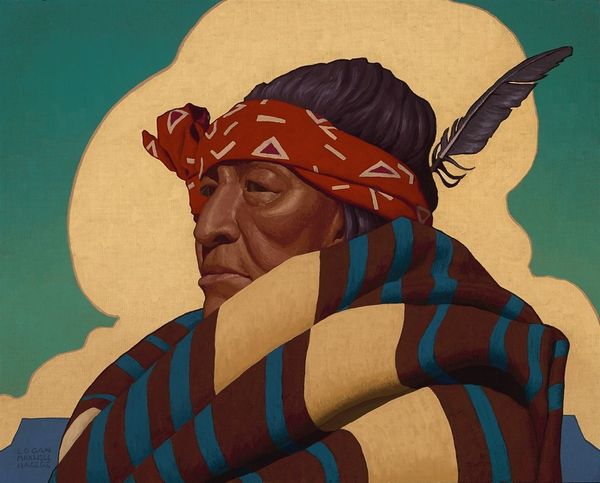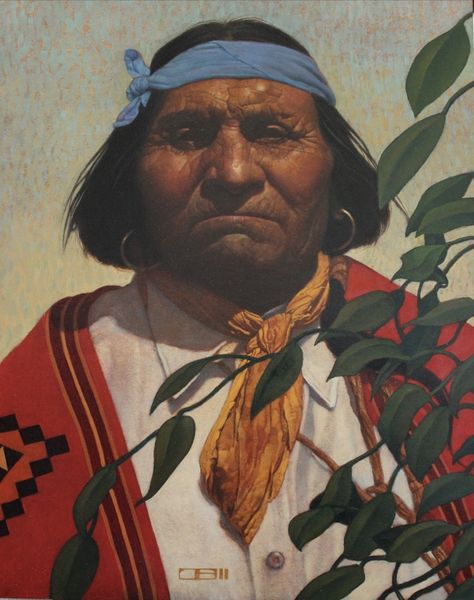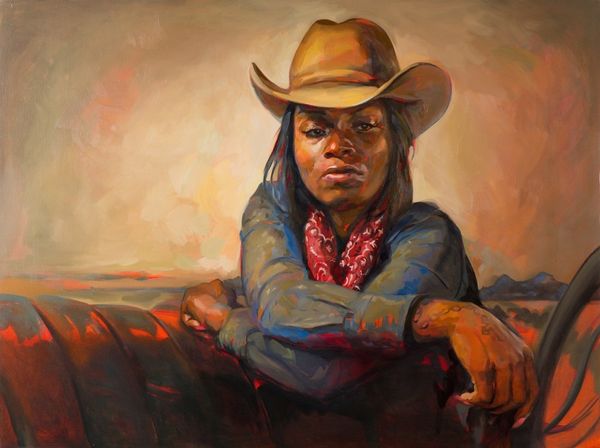
painting, oil-paint
#
portrait
#
figurative
#
contemporary
#
painting
#
oil-paint
#
portrait reference
#
portrait head and shoulder
#
animal portrait
#
animal drawing portrait
#
portrait drawing
#
genre-painting
#
facial portrait
#
portrait art
#
fine art portrait
#
realism
#
celebrity portrait
#
digital portrait
Copyright: Modern Artists: Artvee
Curator: Logan Maxwell Hagege's "Blooming, Oil" offers an intriguing contemporary take on portraiture through oil paint. The painting shows an older Native American man framed with large hollyhocks. My immediate response to this portrait is one of gentle serenity, with a certain dignified sadness. What's striking to you right away? Editor: It is visually arresting; my first thought is about the means of image production today, specifically the tension between contemporary aesthetics and traditional media. Oil paint as a mode of representation immediately evokes an interesting conversation. It's so painterly and almost photographic. How was this constructed? What reference material was used? Curator: Hagege’s portrait enters a rich tradition of genre painting to negotiate complex issues related to identity. You mentioned the material production—note also the sitter’s clothing and headdress. It looks hand-woven; the textile work speaks to cultural practices around artistry and making as a sign of visual and political identity. It prompts questions about how Native American representation evolves in fine art. Editor: Absolutely. It begs questions around consumption as well. Who is buying this work? To whom does it appeal, and why? What relationship exists between labor, the means of production, the final image, and how all of those things get flattened in its final state for capital consumption? The layers upon layers, not only within the composition, but within its life and meaning are striking. The surface, the flat canvas, betrays the complicated network of its becoming. Curator: I think situating this within a wider, intersectional discussion opens a lot up. How are contemporary art markets grappling with historical portraiture in a modern setting? Does Hagege's portrayal either reinforce or actively push back against conventions of that depiction? It provides commentary, in some respects, by creating space to think more deeply about complex histories and politics concerning marginalized identities, which continues to shift and reformulate the dialogue in current representational forms. Editor: Precisely. The history of painting and how we perceive images needs consideration and investigation. These details can encourage the creation of further art, in response and dialogue, but it's all dependent on a continued awareness of not only the image itself but the system it both occupies and reflects. Curator: This detailed and complex view demonstrates how paintings can trigger crucial discourse across cultures, gender, race, identity, labor, materiality, and philosophy—transforming how we perceive these facets both inside and outside the art. Editor: Indeed. An investigation of an artwork's existence provides not only a broader knowledge base but an increased level of responsible looking, seeing beyond an image to unpack it further for necessary understanding and interrogation.
Comments
No comments
Be the first to comment and join the conversation on the ultimate creative platform.
